When Lady Luck has her eyes set on you, she makes appearances in unlikely places and in unlikely ways.
A Snow Leopard was the last thing I was expecting during my two-week trip to the heart of Zanskar. Being winter, I was hoping to see and photograph no more than a bird or two at the villages we encounter on the way. Our guide Lobsang, who had been beating these tracks for more than ten years had never seen a Snow Leopard in this part of Ladakh. Same was true with our tour leader Manish, who had been visiting Zanskar every winter for the last five years.
It was the ninth day of our trek and we had begun the downstream journey from Zangla Village in Zanskar to Leh. Taking advantage of the roads built to traverse within the remote regions of Zanskar, we were taking a car for the first fifteen kilometers before the road ends and the walk begins.
As we were driving from Pidmo Village to Tsarak Dho, someone in the car spotted a group of Ibex on the other side of the slope, perhaps about half-a-kilometer away. The Ibex, about a dozen of them, were sprinting fast along the slope. For a moment we wondered why they were running so fast. Someone suggested that they were perhaps scared by our car. But we were too far and that was unlikely. Gazing at them from the window of the car, I silently wondered what made them sprint. That’s when I saw an odd one in the group. The last one among the runners appeared to have an unusually long tail, unlike rest of the group with short raised tails. I shouted to Lobsang with excitement and said, “something is chasing them.”
Lobsang, who has grown up in Changthang region seeing many snow leopards eat up their sheep, had a second look and decidedly said, “it is a snow leopard.” There was a sudden burst of excitement in the group. We stopped the car and got down quickly for a good look.
While we were getting out from the jeep, the action on the other side of the slope had come to an end as quickly as we had seen it begin. The group of ibex had managed to give a slip to the leopard and the chaser had given up. A few ibex had got separated from the group, but none were in the danger of being caught. We lost sight of the leopard for a few seconds until Lobsang traced it again, emerging slowly from a depression in the slope. It now walked slowly up the hill with a grace that only a big cat can display, despite having lost chase. Its head though, was drooped and barely seen from the distance that we were at, perhaps with a sense of resignation arising from the failed chase.
As he walked slowly uphill on a scaly patch of snow, I asked Lobsang to keep an eye on it and returned to fetch my camera from the car. The leopard allowed me a few poor-yet-recognizable shots before it went behind a bush and out of our sight.
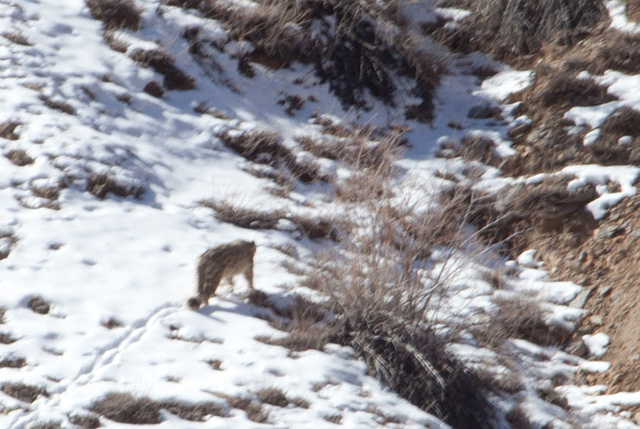
I got down from the train at Agra Fort on a cold November morning and took a bus towards Bharatpur. Somewhere just after crossing Agra and driving past the villages and fields, I suddenly saw three mammals sprinting away and crossing the road quickly ahead of the bus. I could not see them clearly and thought it may be cows, but they were too fast for cows and had a more slender and agile body. Was it some kind of a deer that roamed free in unprotected areas like villages and farmlands? It seemed unlikely. How often in India do you see wild animals living far away from the forests and getting integrated with human habitat? I kept wondering what they are for a long time until I wandered into Keoladeo National Park.
Those were Blue Bulls or Nilgai. There were plenty of them in the small protected region of the park and perhaps a few roamed freely in the region around it. I do not know if these animals had learned to live with humans or were forced into it due to loss of habitat, but it was surprising to find them so far away – about 40km from Bharatpur. I doubt if there was any other forest land in the vicinity that would have given them shelter.
Though Nilgais are in large numbers in Bharatpur, they wander far and wide into the marshes and are not always seen close to the park roads. I did not see even one of them on my first day in the park and saw them from a distance on the second. However, on my last morning in the sanctuary, this fine fellow came closer to the shore and allowed me to take a few pictures.
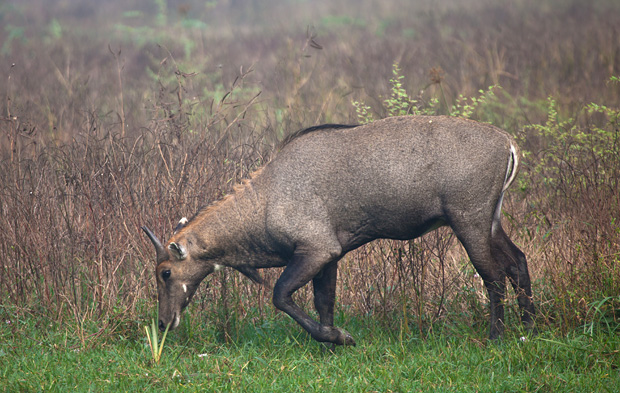
Marshes perhaps make up for more than half the area of Keoladeo National Park in Bharatpur. Naturally, the park has a lot of birds that rely on the abundance of this water. Cormorants and darters come here to fish and so do grey herons and egrets. Black Necked Storks and Painted Storks take pleasure in filtering out algae in the water and consuming them for breakfast. The storks are voracious eaters who seem to be always in a hurry to eat more, as if fearing that their neighbours may take away a portion of the food. Grey Herons stand perfectly still until an unsuspecting fish passes next to them. A microsecond later, the fish is struggling between the beaks of the heron and a few second later disappears in its throat.
I once saw a Grey Heron catch a huge fish almost six inches long and about three inches wide. The heron tried hard to consume it, but it turned out too big and eventually had to put it away. As it tried hard to gulp the fish, a greedy pond heron and a night heron walked up to it without daring to get too close, staring at the fish with a hopeful look!
The large birds were too wary of anyone and preferred to sit as far from land as possible. Even the ones that came closer to edge of the marsh kept a careful look and flew away at the first sight of someone approaching. Some pictures here.
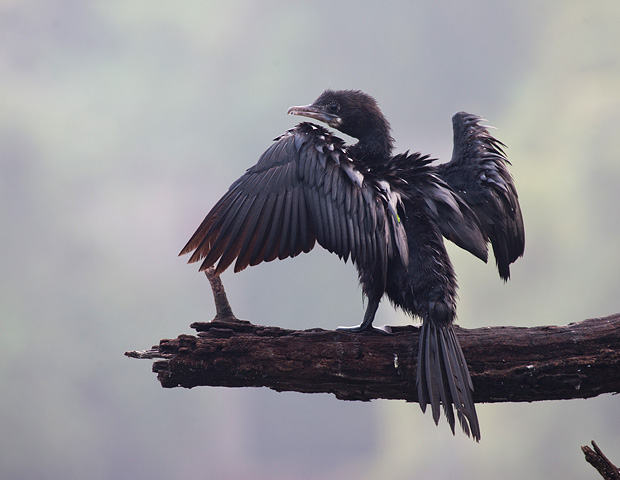
Little Cormorant
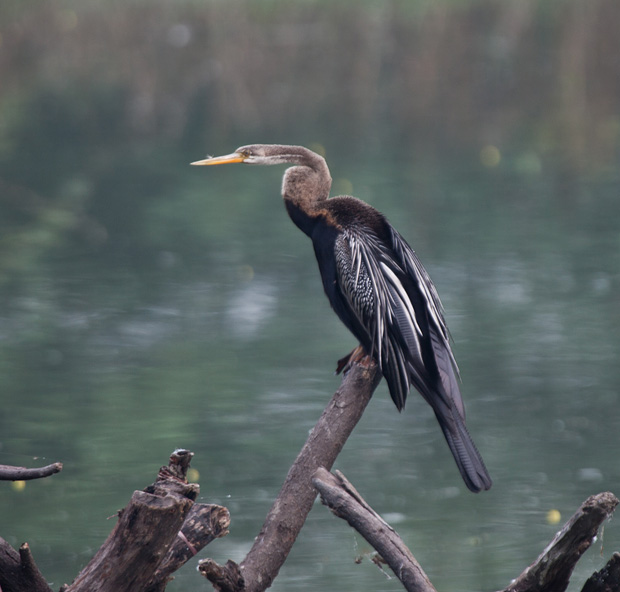
darter
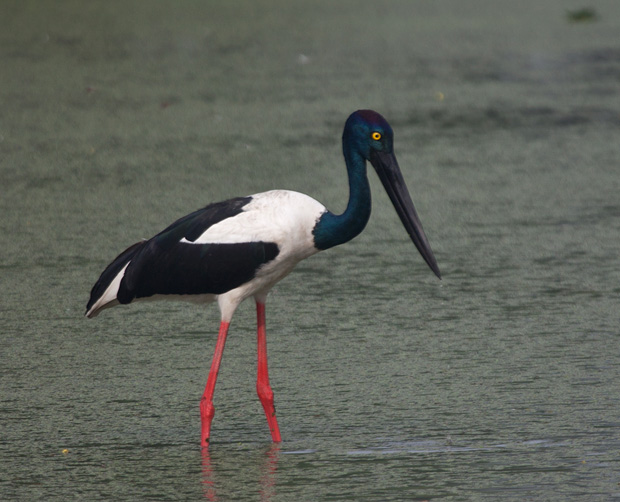
Black Necked Stork
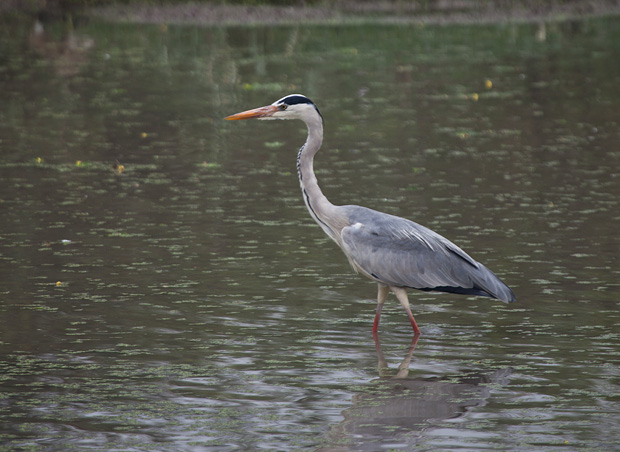
Grey Heron
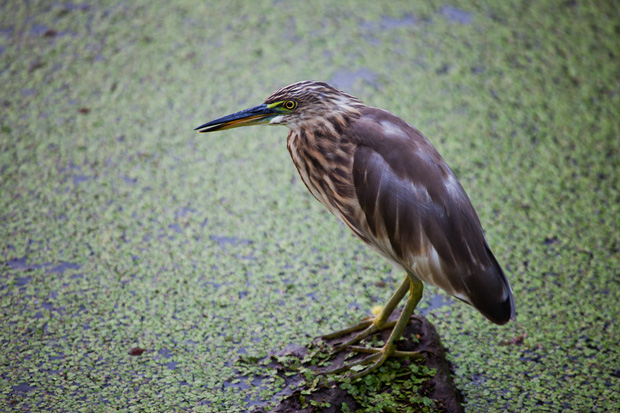
Pond Heron
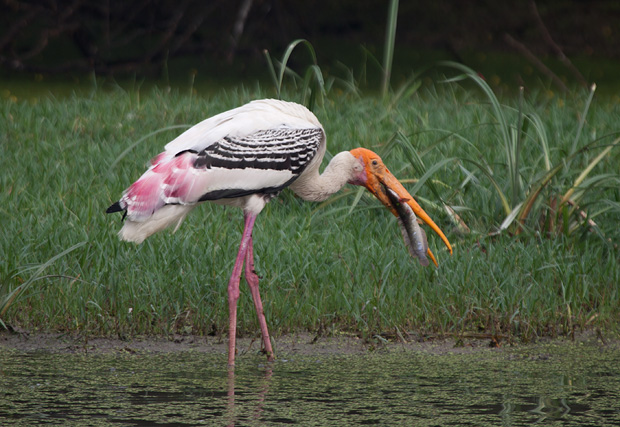
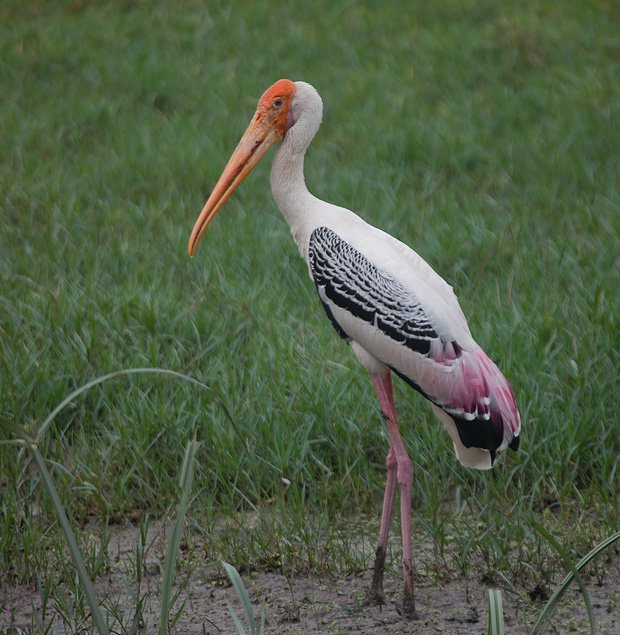
Painted Stork
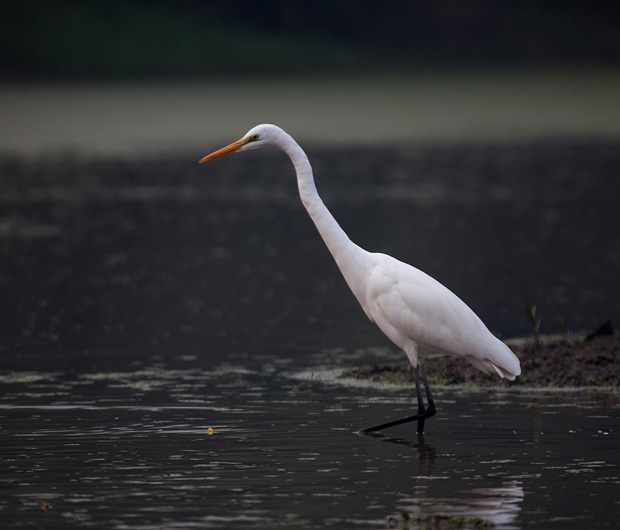
Great Egret
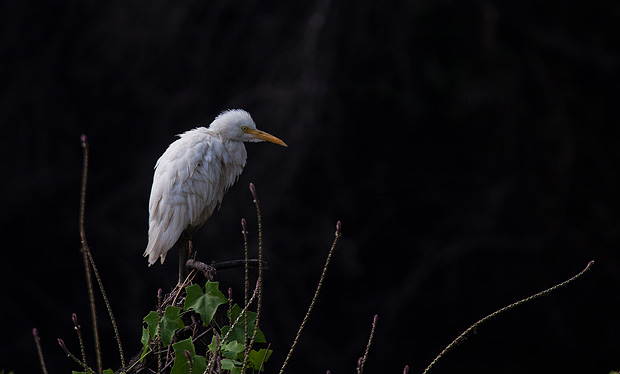
Cattle Egret










